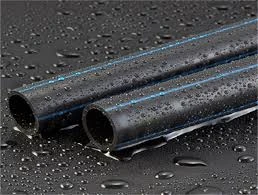Dec . 19, 2024 08:59 Back to list
Techniques for Joining HDPE Pipes in Various Applications and Environments
Understanding HDPE Pipe Jointing Techniques and Benefits
High-Density Polyethylene (HDPE) pipes are widely recognized for their durability, flexibility, and resistance to various chemicals, making them the preferred choice in numerous industrial applications, including water supply, sewage, and gas distribution. A critical factor in utilizing HDPE pipes effectively is the jointing techniques used to connect them, which directly influence the system's integrity and longevity.
Types of Jointing Techniques
1. Electrofusion Welding This method involves using an electrofusion fitting, which contains a built-in heating element. When electrical current passes through, it melts the material at the joint area, allowing the pieces to fuse together. Electrofusion welding is highly regarded for its reliability and is commonly used in applications requiring leak-free joints.
2. Butt Fusion Welding In this technique, two pipe ends are heated with a fusion machine until they reach a molten state, and then they are pressed together. Butt fusion is known for creating strong joints with minimal risk of failure, often used in large diameter pipes where high pressure is a concern.
3. Socket Fusion This operates similarly to butt fusion, but instead, one pipe end is inserted into a fitting that is heated. This method is efficient for connecting smaller diameter pipes and is often used in residential applications.
4. Mechanical Jointing Mechanical connectors can also be employed to join HDPE pipes. This method involves using mechanical fittings, providing flexibility and ease of installation, especially in situations where pipe alignment is difficult. However, they may not offer the same level of leak-proof sealing compared to fusion methods.
Benefits of HDPE Pipe Jointing
hdpe pipe jointing

The choice of an appropriate jointing technique is paramount for ensuring the system's performance and reliability. Here are some of the benefits associated with HDPE pipe jointing
1. Durability and Longevity HDPE pipes, combined with effective jointing methods, create a system designed to withstand harsh environmental conditions and significant pressure. With proper installation, these joints can last for decades, minimizing the need for repairs and replacements.
2. Chemical Resistance HDPE is inherently resistant to a wide range of chemicals, which helps to maintain the integrity of the joints in various applications, including agricultural and industrial uses. This resilience not only ensures the safety of transported materials but also extends the lifespan of the pipe systems.
3. Flexibility and Impact Resistance The flexibility of HDPE allows it to expand and contract with temperature changes, while its impact resistance prevents damage from external forces. This adaptability can be particularly beneficial in areas prone to ground movement or where vibrations are present.
4. Cost-Effectiveness Though the initial cost of HDPE pipes and fusion equipment may be higher than other materials, the long-term savings generated from lower maintenance and replacement costs make it a wise investment. The speed and ease of installation also contribute to reduced labor costs.
5. Environmentally Friendly HDPE is recyclable and can be reprocessed into other products, making it a sustainable choice for construction projects. Additionally, the longevity of HDPE systems means that they require fewer resources for upkeep, aligning with modern environmental considerations.
Conclusion
In summary, HDPE pipe jointing techniques are essential components in the effective and efficient use of HDPE piping systems. Choosing the appropriate method, whether it be electrofusion, butt fusion, socket fusion, or mechanical jointing, greatly affects the performance, durability, and reliability of the entire system. The benefits of employing HDPE pipes and proper jointing techniques underscore their importance in modern infrastructure development, providing solutions that are durable, cost-effective, and environmentally friendly. As the demand for robust plumbing solutions continues to grow, the significance of HDPE and its jointing techniques will likely expand further in the coming years.
-
Durable PP Rigid Sheet: Lightweight, Chemical Resistant Solutions
NewsAug.21,2025
-
PVC Grey Sheet for Extraction: Chemical Resistant & Durable
NewsAug.19,2025
-
Durable PVC Pipe Fittings for Plumbing & Irrigation Needs
NewsAug.18,2025
-
HDPE Steel Belt Reinforced Spiral Corrugated Pipe | High Strength
NewsAug.17,2025
-
HDPE Pipe Fittings: Durable, Leak-Proof Solutions
NewsAug.16,2025
-
Premium CPVC Sheet: High-Temp & Chemical Resistant Solutions
NewsAug.15,2025

